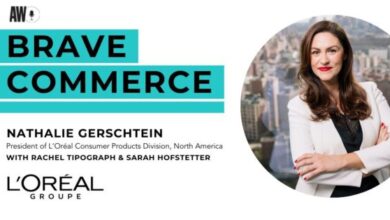
Creator houses grow but shrink
When most people think of content or creator houses, they think of wealthy, young internet celebrities who are working, playing and living together in lavish mansions or fantasy villas. Recent history has certainly supported this image—just check out the Hype House or Collab Crib.
While it won’t be a case of twentysomething creators cornering the high-end real estate market, there will be a boom in creator houses, with one notable change. In 2024, creator houses will be more starter homes than estates, and the inhabitants will be more up-and-coming creatives than multimillion-follower moguls.
Being a creator is rapidly becoming both more popular and more attainable. Brands are looking less to celebrity influencers and more toward creators and influencers who produce unique content and are more relatable. While some creators still aspire to live the Jake Paul lifestyle, many more are happy making great content, living and working with friends, having fun and making a modest income.
This year, the inhabitants and the houses will not be as famous, but the concept will continue to grow and take hold. Marketers are already seeing the trend of using smaller influencers to get their messages across in a more relatable way. Creator houses will take their cue from that shift and become an environment where micro and fledgling influencers can prosper.
Influencers drive research and development
We are already firmly entrenched in the age of co-creation and influencer-owned products and brands. Celebrity influencers such as Huda Kattan and Emma Chamberlain have used their expertise and significant promotional power to create successful brands with products that consumers crave—Kattan with her Huda Beauty line and Chamberlain with her Chamberlain Coffee brand.
We will continue to see the mega influencer morph into brand CEO, but the more common trend in 2024 will involve influencers of all shapes and follower counts steering the product development process. Having a direct, trusted line to various consumer groups is R&D gold, and influencers have it in spades.
Instead of messengers, brands will use influencers more and more as insight gatherers. They will rely on them to engage their audiences in a variety of ways, from eliciting feedback on a feature to simple A/B tests, to more pie-in-the-sky “if you could have this” interactions.
While this type of insight gathering won’t have the precision that comes with traditional market research, it also won’t have the challenges. Of course, influencers will still largely be tasked with trying to influence, but there will be value in employing them to unearth consumer insights that lead to more relevant products.
Influencing without AI
Artificial intelligence is revolutionizing businesses in a multitude of ways, and the world of influencer marketing is not immune to its charms. While brands and agencies will tap into AI to help guide their choice of influencers, analyze campaigns and brainstorm on their creative briefs, we will see far less reliance on AI from the influencers themselves.




